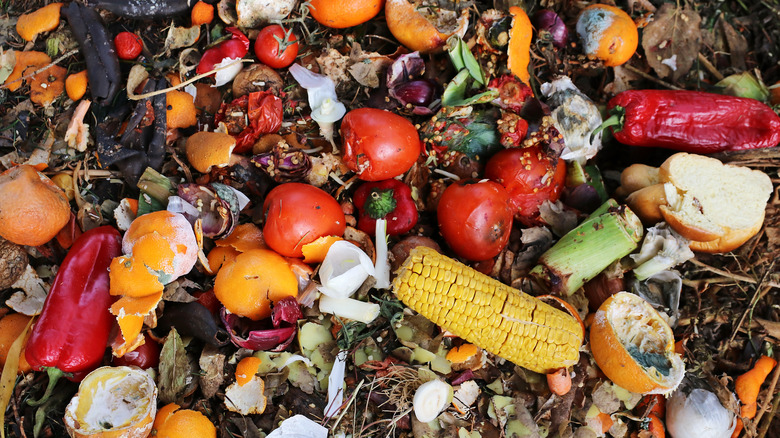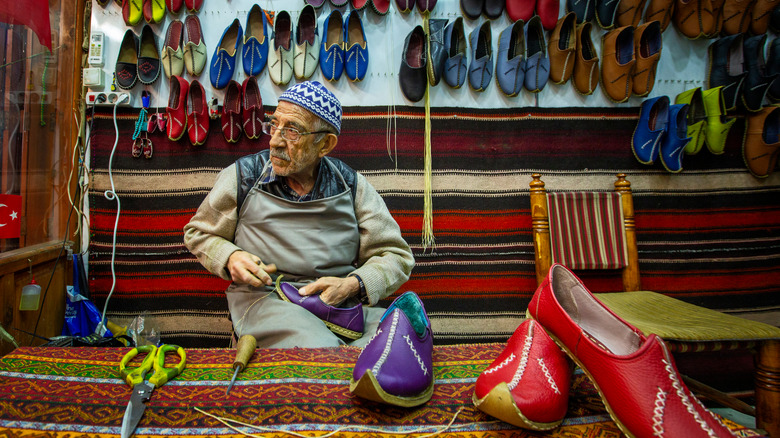What Is Sustainable Tourism And Why Is It Important?
Sustainable Tourism: What is it and why is it so important? This very well may be one of the most fragile and dire topics of our generation right now, yet it's also quite often misunderstood. In brief, mass tourism globally has had an extremely negative impact on our planet's environment, wildlife, and natural resources, which has led to environmental, cultural, social, and economic disasters. In order to reverse this damage, sustainable tourism seeks to counteract these negative ramifications now and in the future by creating a more positive effect. A recent case study, per Science Direct, outlines how practicing sustainability can significantly reduce our global carbon footprint where tourism is concerned.
The World Tourism Organization officially initiated a strong stance on developing and maintaining long-term sustainable tourism from all parties involved in order to protect and create a better environment, enforcing the protection of land, heritage sites, and communities, while creating and stabilizing economic growth at all levels. The globally mandated Coronavirus lockdowns in 2020 provided the world with a shocking, eye-opening view of the tremendous, positive effects that ensued on the environment due to the mass halt in the tourism industry. Although this devastating period in history was disastrous for tourism, the benefits of a rehabilitated, and stronger environment created from it significantly outweighed the negative, as reported by the National Library of Medicine. So, how can all of us make tourism more sustainable? It's far easier than you think, and quite honestly, it's something we should all be implementing.
Minimizing your environmental impact
First and foremost, this is one of the most important topics that must be considered when making tourism more sustainable. Let's start with your mode of transport when traveling. Flying by plane, and even driving your car, ranks high in the number of CO2 emissions being released into the environment, with a staggering 49% of transportation used for tourism worldwide creating the majority of the carbon footprint, according to Sustainable Travel. In order for us to offset our carbon footprint, reduce emissions, and develop sustainable tourism, airline companies would need to implement alternative, renewable resources, and do away with the use of fossil fuels, such as jet fuel. A reduction in airplane size, the use of more environmentally friendly materials, and a reduction in flights are also crucial to implementing change for the better.
As travelers, deciding when and where to fly is an important part we play in the role of sustainable tourism. If flying is a must, booking nonstop flights, packing light, and choosing a different mode of transport to driveable destinations is essential. Opting for the train is one mode of sustainable transport. Rental car companies are stepping up to the plate when it comes to sustainable tourism by providing more eco-friendly, greener vehicles to their customers, per Car Rental Reviews. Again, as travelers, in order to help reduce greenhouse gas emissions, booking a hybrid or electric vehicle (EV) over a diesel or gas-powered one can have significant effects in reducing your carbon footprint.
The unsustainability of food waste
Piggybacking on the last topic, did you know that an unprecedented 80% of food is imported to remote islands from countries like the U.S., U.K., and parts of Europe in the name of tourism? That means the food that is on your plate, while you're dining in Bora Bora or Fiji, played a horrifying part in the drastic amount of CO2 emissions released into the environment. If traveling to a distant island is in your vacation plans, before heading off to eat at any one of the restaurants, ask where the food is sourced from to get an idea of how far it had to travel to feed you, or better yet, opt for lodging and dining somewhere that sustainably sources their food locally and naturally from their own garden — farm to table.
The United States is well-known for its all-you-can-eat buffets, and sadly, many countries followed suit in this quest to overfeed and overeat. Hotels and restaurants entice travelers and customers with one-stop, one-price meal deals, yet the majority of the food is tossed in the bin afterward, creating approximately 10% of the carbon footprint on this planet when it comes to tourism. As food breaks down in landfills, it releases the greenhouse gas known as methane. According to Change for Climate, methane is far worse on the environment than carbon dioxide, and this waste of food can be easily prevented by both consumers and the companies serving it, through more sustainable tourism.
Sustainable accommodations
Looking for sustainable accommodations while traveling is part of doing your part toward sustainable tourism. A five-star hotel or a yurt might both be sustainable options, but it's a matter of doing your research before booking any accommodations to know whether or not they've implemented energy-efficient and sustainable means to offset their carbon footprint. Sustainable Travel International highlights several very important steps for hotels to develop and adhere to sustainable tourism. And, while these steps are geared toward the accommodations to ramp up their part in doing so, travelers reviewing the suggestions will become more aware of what to look for and ask about before reserving any lodging.
Accommodations that are geared toward sustainable tourism will proudly identify themselves as part of "Green Tourism" on their website and within their property. From camping to glamping, there's a host of options for sustainable lodging. And, with more and more eco-hotels popping up around the globe, travelers will be amazed at just how beautiful and inviting an eco-friendly accommodation can be, per Lonely Planet.
If it's not locally made, don't buy it
Just as food being imported overseas for tourism has a significant impact on the environment, so do the souvenirs, accessories, and niche clothing items that are flown across the globe to be put on display for tourists to buy. And, when 12% of carbon emissions are produced by this act, the trinket on your wrist or the floppy sunhat on your head is by no means sustainable.
In order to fully embrace sustainable tourism, opting to buy from local artisans that use locally sourced materials not only ensures that the products you're buying did not travel far in order for you to possess them, but it also boosts the economy for the local community you're buying from, as confirmed by EcoTourism World. And, let's be honest, wouldn't you much rather own a hand-sewn sunhat than a mass-produced product that may or may not have been made in a sweatshop overseas? The more you can shop and buy locally, the more you're contributing to the development of sustainable tourism. All in all, these are but a handful of things we can all do to promote sustainable tourism, but those actions are just a step toward protecting this planet we call home.




